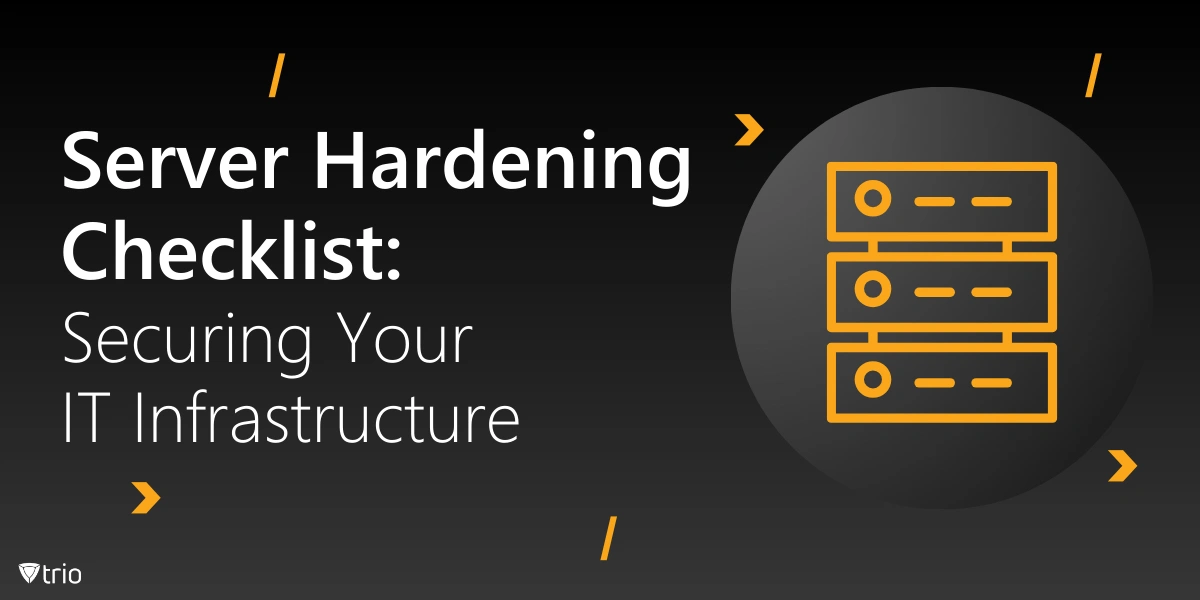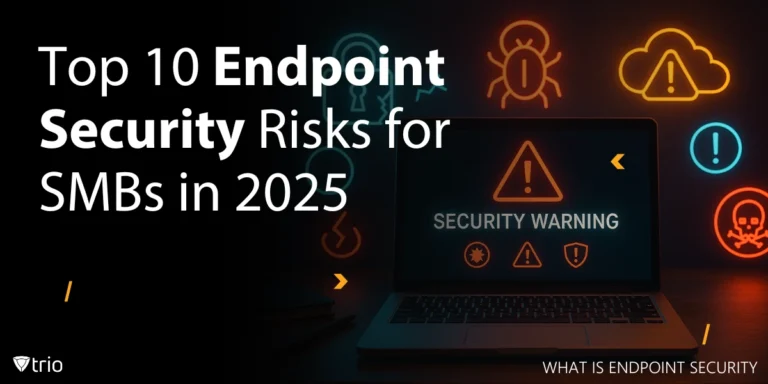Servers are the backbone of modern IT infrastructure, storing sensitive data and running critical applications. But with great importance comes great responsibility. Ensuring that your servers are secure is vital to protecting your organization’s operations from data breaches, compliance issues, and costly downtime. This is where server hardening steps in. In this blog, we’ll walk you through a comprehensive server hardening checklist that not only minimizes vulnerabilities but also strengthens your entire IT ecosystem.
What is Server Hardening?
Server hardening refers to the process of securing a server by reducing its attack surface. It involves configuring the operating system, network, and applications to minimize vulnerabilities, remove unnecessary services, and implement robust security measures.
The key goals of server hardening include:
- Minimizing vulnerabilities: By addressing weak points in the server’s configuration, you prevent attackers from exploiting them.
- Reducing the attack surface: This means disabling unnecessary features and services to limit potential entry points for attackers.
- Improving overall resilience: A hardened server is better equipped to withstand security threats and mitigate risks.
Server hardening aligns with cybersecurity best practices, such as those outlined by the Center for Internet Security (CIS Benchmarks), ensuring consistency and adherence to industry standards.
Why is Server Hardening Important?
Server hardening is essential to protect your infrastructure against common vulnerabilities, such as:
- Open Ports: Unused open ports serve as easy entry points for attackers.
- Default Configurations: Out-of-the-box settings often include insecure defaults that hackers can exploit.
- Outdated Software: Failure to update operating systems or applications leaves servers vulnerable to known exploits.
- Weak Authentication: Poor password policies and the absence of multi-factor authentication enable unauthorized access.
- Misconfigured Firewalls: Overly permissive firewall rules expose servers to external threats.
These vulnerabilities, if left unaddressed, make servers prime targets for attacks. The consequences of an unsecured server can be severe:
- Data Breaches: Unauthorized access to sensitive information can harm your reputation and lead to financial loss.
- Downtime: Compromised servers disrupt operations, reducing productivity and eroding customer trust.
- Compliance Penalties: Non-compliance with industry regulations can result in hefty fines and legal action.
The cost of neglecting server hardening is staggering. Organizations face breach remediation expenses, legal liabilities, operational downtime, and the loss of customer trust. In extreme cases, these financial impacts can cripple a business.
Server Hardening in Cloud Environments
With the shift to cloud-based infrastructure, server hardening has become even more critical for securing virtual environments. To protect dynamic and scalable cloud servers, organizations must:
- Encrypt sensitive data.
- Secure APIs.
- Adhere to cloud provider security recommendations.
This proactive approach not only mitigates risks but also strengthens resilience against emerging threats. The shared responsibility model emphasizes collaboration between organizations and cloud providers to ensure robust security measures are in place.
The Cost of Neglect
Recent ransomware attacks exploiting weak server configurations illustrate the importance of proper hardening measures. Organizations with robust security policies could have mitigated—or entirely avoided—these damages. Proactive server hardening ensures:
- Enhanced Security: Protection against vulnerabilities and potential exploits.
- Improved Server Performance: Optimized resources free from malicious activity.
- Peace of Mind: Confidence in a secure infrastructure.
By prioritizing server hardening, organizations can protect their assets, maintain compliance, and avoid the staggering financial and reputational consequences of neglecting this essential security practice.

Compliance Requirements and Server Hardening
Many industries require organizations to adhere to strict compliance standards, such as GDPR, HIPAA, and PCI-DSS, to protect sensitive data and ensure security best practices. Server hardening is integral to meeting these requirements. By implementing measures like encryption, robust access controls, and logging, you can demonstrate compliance and avoid penalties during audits. Additionally, hardening servers supports the integrity and confidentiality mandates set forth by regulatory frameworks, making it a critical component of any compliance strategy.
The Comprehensive Server Hardening Checklist
Let's dive into a detailed checklist of actionable steps to harden your servers effectively. Follow these measures to minimize risks and strengthen your IT infrastructure.
1. Operating System (OS) Hardening
Start by securing the foundation of your server: the operating system.
- Update and patch the OS regularly: Keeping your operating system up to date is crucial. Ensure you install all service packs, security updates, and patches promptly to close known vulnerabilities.
- Remove unnecessary services and applications: Disable features and services that are not essential for the server’s operation. Each unused service is a potential entry point for attackers.
- Configure firewall rules: Set up a firewall to control incoming and outgoing network traffic. Only allow traffic on ports that are absolutely necessary.
2. Network Security
A robust network security strategy is essential for server hardening.
- Enable encryption: Use protocols such as TLS/SSL to secure data in transit. This prevents unauthorized access to sensitive information.
- Restrict network access: Implement IP whitelisting to limit access to trusted sources only. This is especially important for remote access.
- Set up VPNs for secure remote access: Protect administrative tasks by requiring a Virtual Private Network (VPN) for any remote connections.
3. Account and Access Management
Mismanaged user accounts are one of the biggest vulnerabilities for servers.
- Enforce strong password policies: Require complex passwords and regular password changes for all user accounts.
- Implement Multi-Factor Authentication (MFA): MFA adds an extra layer of security by requiring multiple forms of verification.
- Disable unnecessary accounts: Remove or disable the guest account and other default accounts that are not in use, such as the administrator account.
4. Logging and Monitoring
Proactive monitoring ensures you catch issues before they escalate.
- Configure logging for security events: Ensure that critical activities are recorded in the event log, including login attempts and configuration changes.
- Enable Intrusion Detection/Prevention Systems (IDS/IPS): These tools can identify and block suspicious activities in real time.
- Regularly review logs: Set up alerts for unusual activity and conduct periodic reviews of logged data.
5. Application and Database Security
Applications and databases are common targets for cyberattacks.
- Ensure all applications are up to date: Regularly update software to patch vulnerabilities.
- Secure database connections: Use encryption and enforce the principle of least privilege to limit access.
- Scan applications for vulnerabilities: Regularly perform vulnerability scans and address any issues promptly.
6. Physical Security
Even the best virtual security measures can be undermined by poor physical security.
- Limit physical access to servers: Ensure servers are located in secure facilities with restricted access.
- Use tamper-evident hardware: Physical locks and seals can deter unauthorized access.
- Backup data regularly: Store backups offsite or in a secure cloud environment to ensure data recovery in case of a breach.
7. Post-Hardening Validation
Once hardening measures are implemented, validate their effectiveness.
- Perform penetration testing: Simulate cyberattacks to identify potential vulnerabilities and address them.
- Review audit logs: Analyze logs to ensure all changes and activities align with security policies.
- Conduct regular compliance checks: Verify that your server meets industry standards and regulatory requirements.
- Schedule periodic reviews: Regularly reassess and update your server configurations to adapt to new security challenges.
Server Hardening Checklist (With Downloadable File)
To streamline your hardening efforts, we’ve created a practical server hardening checklist that includes actionable steps, recommended settings, and compliance-related tasks.
This checklist will help you:
- Ensure consistency across your server configurations.
- Save time by following a structured hardening guide.
- Reduce the risk of human error during implementation.
Download the Server Hardening Checklist now to kickstart your hardening process and secure your IT infrastructure effortlessly.
Best Practices for Maintaining a Hardened Server
Server hardening is not a one-and-done process. Regular maintenance is crucial to ensure lasting security.
- Review and update configurations regularly: Periodic audits help you stay ahead of emerging threats. Review firewall rules, disable unnecessary services, and re-evaluate your server’s security settings to ensure continued effectiveness.
- Perform vulnerability scans: Use automated tools to continuously scan for weaknesses. Address detected vulnerabilities promptly to maintain a secure environment.
- Train your team: Equip IT staff with the knowledge and tools they need to manage servers securely. This includes training on incident response, recognizing threats, and implementing security updates.
- Stay informed: Keep up with the latest security trends and updates. Subscribe to security bulletins and attend webinars or training sessions to stay ahead of potential risks.
Proactive maintenance not only ensures server security but also prevents minor issues from escalating into costly problems. A well-maintained server is a resilient server.

How Trio Can Help with Server Hardening Checklist
Managing server security manually can be overwhelming. This is where Trio’s Mobile Device Management (MDM) solution comes in.
- Automated patching: Trio ensures your servers are always up to date with the latest security patches and service packs.
- Centralized monitoring: Keep an eye on all server activities with real-time logging and monitoring features.
- Access control: Manage user accounts and enforce security settings seamlessly.
With Trio, you can simplify the hardening process and focus on other critical tasks. Request a free demo to see how Trio can transform your server security strategy.
Conclusion
Securing your servers with a comprehensive server hardening checklist is essential for protecting sensitive data, maintaining operational efficiency, and meeting compliance standards. By following the actionable steps outlined in this guide and leveraging tools like the server hardening checklist, you can build a robust defense against threats.
Take the next step today: Download the checklist and try Trio’s MDM solution to secure your servers effortlessly.
Get Ahead of the Curve
Every organization today needs a solution to automate time-consuming tasks and strengthen security.
Without the right tools, manual processes drain resources and leave gaps in protection. Trio MDM is designed to solve this problem, automating key tasks, boosting security, and ensuring compliance with ease.
Don't let inefficiencies hold you back. Learn how Trio MDM can revolutionize your IT operations or request a free trial today!





